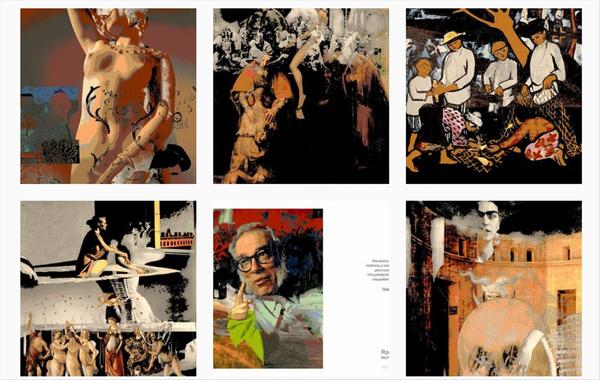Raquel IA, unique art generated by Artificial Intelligence
During the last months we have commented on several projects that generate an image (most of the time abstract) from words or phrases sent by the user. The last one we tried was Wombo, but there are others that work in a completely different way to offer equal or better results.
Now we are introduced to Raquel IA, an artificial intelligence that was born in Mexico to create images from large texts, not phrases or words.
That is the main difference of Raquel IA with respect to other options that we have tried. In this case we cannot say something as simple as “A lion in Barcelona”, we have to give it a song lyric, or a poem, something long so that an abstract image is generated that represents it.
Marcelo Funes-Gallanzi, principal scientist of the group and co-founder of Raquel-IA, tells us:
He also tells us that one of the main limitations in the past has been that the images generated were often amorphous forms with little aesthetic appeal, each specifically programmed, some based on a sequence of words, and had no coherence or associated compositional propositions. with them. A large number of groups have been working on a text-to-image strategy that could be applied to any text, and “Finally, we came up with the idea of using ekphrasis (a rhetorical description of a visual work of art) to describe a text. base knowledge of some well-known works of art on our artificial intelligence general cognition engine in combination with a virtual decoupage approach to the composition of the final work.”
How to Eject a CD From Your Mac
— Limp Bizkit Becky Wed Sep 17 18:09:06 +0000 2014
It can be tested at ekphrasis.net by selecting the corresponding language. Then we will include the text in the chat with Raquel and press ENTER. Minutes later, Raquel will show some images from her database that she will use for the composition, and that is when we will have to click on “Generate image”.

They tell us that mainly public domain images are used, licensed or owned, so the generated image can be used freely and is unique. It is possible to upload images that the user wants to add, such as logos or own photos, and you can delete any that you don't like. It even has a simple editor to touch up the generated images.
While the results can be impressive (several examples from her Instagram account above), it doesn't always work out the first time. In the tests I put a poem about Barcelona, but in the resulting images there was nothing that represented the city, so I had to add a photo of my own to create a more suitable composition. I also put the pirate song, but in that case Raquel didn't get any results back.
Regarding the business model, they comment that the visitor can buy these works of art in HD (1,200 x 1,200 pixels) and UltraHD (3,000 x 3,000 pixels), physically on paper or canvas and, if they wish, in the form of NFT via www.opensea.io. Low resolution samples are free to download to create wallpapers or illustrate articles, for example. Each image is sold only once and each artwork has a unique number.
